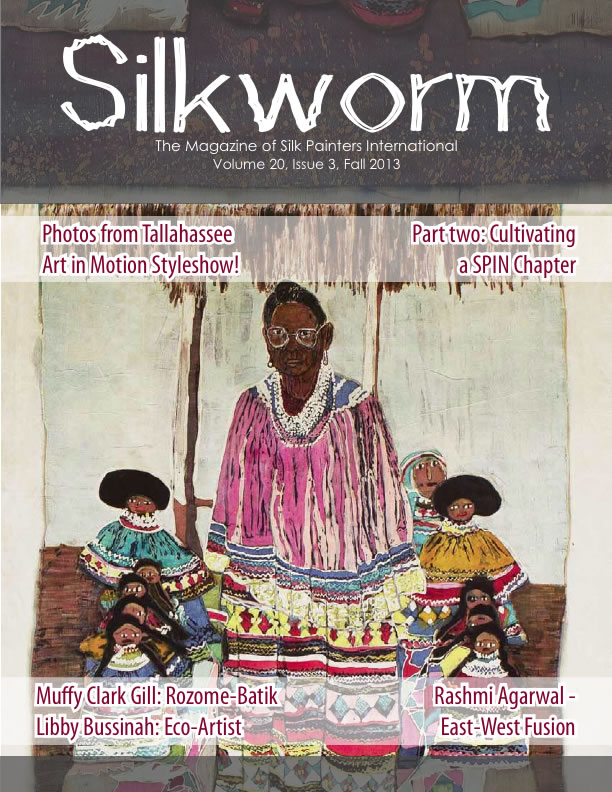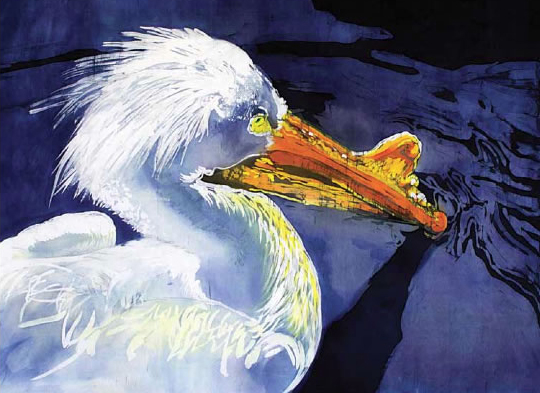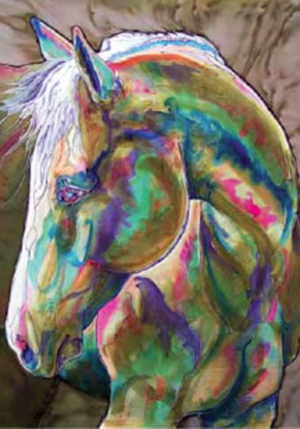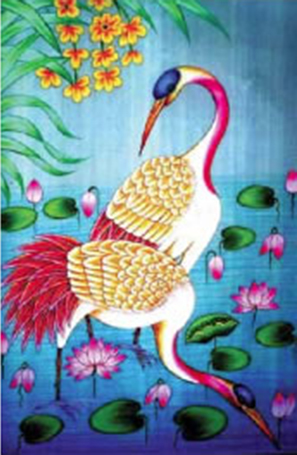Silkworm Magazine, Volume 20, Issue No. 3, September 2013
|
The September issue delves into the batik art of Muffy Clark Gill, the eco-art of Libby Bussinah while exploring the East-West silk fusion of Rashmi Agarwal. Also featured, Part 2 of Forming a Silk Painting Chapter with Suz Knight. Enjoy some fashion images from the Mini-Fest in Tallahassee, Florida. Mini-Fest was a great success, according to it's participant. Co-founder Diane Tuckman explains a little about it in a letter to the editor. |
 |
In This Issue |
|
|
Rozome-Batik Artist
|
|
|
Eco-Artist
|
Teaching an East-West
|
Silk painting began in India as early as the 2nd Century A.D. and continues today. Rashmi Agarwal is a native of India and began studying silk painting on her own many years ago. Like many other silk artists, who had no early access to mentors, she explored the possibilities of silk and dyes on her own for nearly ten years. “When I first encountered silk painting, it quickly became my passion. That was nearly fifteen years ago. Today, my passion for silk painting is even stronger.” Rashmi admits that she was limited because she did not know about the commercial dyes that are readily available in many other countries. (To read more, go to Vol. 20, Issue No. 3.) |


